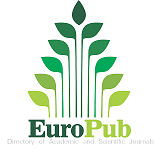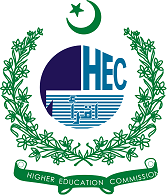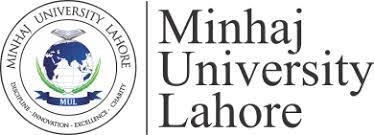Global Fish Production, Consumption, Export, and Import Status
DOI:
https://doi.org/10.58932/MULA0023Keywords:
Fish, Production, Consumption, Aquaculture, FisheryAbstract
Regarding global concern, fish production, consumption, and international trade have witnessed significant changes in recent decades because of technological improvements, shifts in consumers’ preferences over food and diets, and economic integration. This study aims to give a comprehensive overview of the current state of the fish industry globally, including factors such as production, consumption, and trends in export and import. Production of fish from either wild fishing or farming, which includes both capture fisheries and aquaculture, has gone to an extent that is hard to imagine. Based on the data available, fish production up to 2023 achieved even two hundred million metric tons, of which aquaculture had a significant share. The advancement of technology and species breeding, better fish farming practices, and renewability have become major driving forces in aquaculture production, especially in Asian countries, where the high production level emanates from. Aquaculture, however, seems to be growing at a steadier pace despite the current rate of capture fisheries facing issues like overfishing, climate change, and habitat deterioration that call for increased control and improved fishing methods. Consumption behavior has also changed; fish has now become part of the staple diet considering the nutritional value it has. The average consumption of fish has increased, particularly in developing nations, where fish contribute significantly to protein consumption. The average global per capita consumption stood at approximately twenty-one kilograms per year, hence boosting the requirements due to factors such as increased income levels, increased population density, and more focus on health.
References
Akbaraly, T. N., & Brunner, E. J. (2008). Socio-demographic influences on trends of fish consumption during later adult life in the Whitehall II study. British Journal of Nutrition, 100(5), 1116-1127. Retrieved 5 24, 2024, from https://cambridge.org/core/journals/british-journal-of-nutrition/article/sociodemographic-influences-on-trends-of-fish-consumption-during-later-adult-life-in-the-whitehall-ii-study/0e96c43963c28c0f673045df9259535a
Bird, F. A., Pradhan, A., Bhavani, R., & Dangour, A. D. (2019). Interventions in agriculture for nutrition outcomes: A systematic review focused on South Asia. Food Policy, 82, 39-49. Retrieved 5 24, 2024, from https://sciencedirect.com/science/article/pii/s0306919218308364
Blanchard, J. L., Blanchard, J. L., Jennings, S., Jennings, S., Holmes, R., Harle, J., . . . Barange, M. (2012). Potential consequences of climate change for primary production and fish production in large marine ecosystems. Philosophical Transactions of the Royal Society B, 367(1605), 2979-2989. Retrieved 5 24, 2024, from https://ncbi.nlm.nih.gov/pmc/articles/pmc3479740
Bostock, J., McAndrew, B., Richards, R. H., Jauncey, K., Telfer, T. C., Lorenzen, K., . . . Corner, R. (2010). Aquaculture: global status and trends. Philosophical Transactions of the Royal Society B, 365(1554), 2897-2912. Retrieved 5 24, 2024, from https://ncbi.nlm.nih.gov/pmc/articles/pmc2935128
BS, H., RS, C., JL., B., L, B., HE, F., JA, G., . . . M, M. (2019). Opinion: putting all foods on the same table: achieving sustainable food systems requires full accounting. Proc Natl Acad Sci, 116(37). doi:10.1073/pnas.1913308116
Curhan, S. G., Eavey, R. D., Wang, M., Rimm, E. B., & Curhan, G. C. (2014). Fish and fatty acid consumption and the risk of hearing loss in women. The American Journal of Clinical Nutrition, 100(5), 1371-1377. Retrieved 5 24, 2024, from https://ncbi.nlm.nih.gov/pmc/articles/pmc4196487
Da, U., Widanarni, & Ma, S. (2015). Quality of Dried Bacillus NP5 and its Effect on Growth Performance of Tilapia (Oreochromis niloticus). Pakistan Journal of Biological Sciences, 18(2), 88-93. Retrieved 5 24, 2024, from https://ncbi.nlm.nih.gov/pubmed/26364359
Daudpota, A. M., Abbas, G., Kalhoro, I. B., Shah, S. A., Kalhoro, H., Hafeez-ur-Rehman, M., & Ghaffar, A. (2016). Effect of feeding frequency on growth performance, feed utilization and body composition of juvenile Nile tilapia, Oreochromis niloticus (L.) reared in low salinity water. Pakistan Journal of Zoology, 48(1), 171-177. Retrieved 5 24, 2024, from http://zsp.com.pk/pdf48/171-177 (21) qpjz-0266-2015 7-9-15 (corrected).pdf
Daudpota, A. M., Kalhoro, I. B., Shah, S. A., Kalhoro, H., & Abbas, G. (2014). Effect of stocking densities on growth, production and survival rate of red tilapia in hapa at fish hatchery Chilya Thatta, Sindh, Pakistan. Retrieved 5 24, 2024, from http://journal.bdfish.org/index.php/fisheries/article/view/45
Desilva, S., & Soto, D. (2009). Climate change and aquaculture: potential impacts, adaptation and mitigation. Retrieved 5 24, 2024, from http://fao.org/docrep/012/i0994e/i0994e04.pdf
Diana, J. S. (2009). Aquaculture production and biodiversity conservation. BioScience, 59(1), 27-38. Retrieved 5 24, 2024, from https://academic.oup.com/bioscience/article/59/1/27/306930
Ern, R., Huong, D. T., Cong, N. V., Bayley, M., & Wang, T. (2014). Effect of salinity on oxygen consumption in fishes: A review. Journal of Fish Biology, 84(4), 1210-1220. Retrieved 5 24, 2024, from https://onlinelibrary.wiley.com/doi/abs/10.1111/jfb.12330
Farooq, M. (2023). Pakistan seafood exports hit record $469 million in financial year. Retrieved from https://bit.ly/3Vd1MR3
Finegold, C. (2009). The importance of fisheries and aquaculture to development. Retrieved 5 24, 2024, from http://pubs.iclarm.net/resource_centre/wf_2546.pdf
Food and Agriculture Organization . (2012). The State of World Fisheries and Aquaculture - 2012. Food and Agriculture Organization of the United Nations. Retrieved 5 24, 2024, from http://www.fao.org/docrep/016/i2727e/i2727e01.pdf
Food and Agriculture Organization. (2021). Fish to 2030 : prospects for fisheries and aquaculture (Report 83177). Retrieved 5 24, 2024, from Food and Agriculture Organization; World Bank Group: http://documents.worldbank.org/curated/en/2013/12/18882045/fish-2030-prospects-fisheries-aquaculture
Gjedrem, T., Robinson, N. A., & Rye, M. (2012). The importance of selective breeding in aquaculture to meet future demands for animal protein: A review. Aquaculture, 350, 117-129. Retrieved 5 24, 2024, from https://sciencedirect.com/science/article/pii/s0044848612002128
Jenner, A. (2018). Recirculating aquaculture systems: The future of fish farming? Retrieved 5 24, 2024, from http://www.csmonitor.com/Environment/2010/0224/Recirculating-aquaculture-systems-The-future-of-fish-farming
Kasan, N. A., Ghazali, N. A., Ikhwanuddin, M., & Ibrahim, Z. (2017). Isolation of potential bacteria as inoculum for biofloc formation in pacific whiteleg shrimp, litopenaeus vannamei culture ponds. Pakistan Journal of Biological Sciences, 20(6), 306-313. Retrieved 5 24, 2024, from https://ncbi.nlm.nih.gov/pubmed/29023055
Kochan, T. A., Guillén, M. F., Hunter, L. W., & O'Mahony, S. (2009). Introduction to the Special Research Forum— Public Policy and Management Research: Finding the Common Ground. Academy of Management Journal, 52(6). Retrieved 5 24, 2024, from https://journals.aom.org/doi/abs/10.5465/amj.2009.47084646
Lashari, P., Laghari, M. Y., Xu, P., Zhao, Z., Jiang, L., Narejo, N. T., . . . Zhang, Y. (2016). Complete mitochondrial genome of catfish Bagarius bagarius (Hamilton, Sisoridae; Siluriformes) from Indus River Sindh, Pakistan. Mitochondrial DNA, 27(1), 439-440. Retrieved 5 24, 2024, from https://ncbi.nlm.nih.gov/pubmed/24660912
Mohsin, M., Hengbin, Y., Luyao, Z., Rui, L., Chong, Q., & Mehak, A. (2022). An Application of Multiple-Criteria Decision Analysis for Risk Prioritization and Management: A Case Study of the Fisheries Sector in Pakistan. Sustainability, 14(4). doi:10.3390/su14148831
Rakocy, J. E., Masser, M. P., & Losordo, T. M. (2019). Recirculating aquaculture tank production systems: Aquaponics — integrating fish and plant culture. (454). Retrieved 5 24, 2024, from http://www.aces.edu/dept/fisheries/aquaculture/documents/309884-SRAC454.pdf
Rehman, A., Deyuan, Z., Hena, S., & Chandio, A. A. (2019). Do fisheries and aquaculture production have dominant roles within the economic growth of Pakistan? A long-run and short-run investigation. British Food Journal. Retrieved 5 24, 2024, from https://emerald.com/insight/content/doi/10.1108/bfj-01-2019-0005/full/html
Saghir, M., Zafar, S., Tahir, A., Ouadi, M., Siddique, B., & and Hornung, A. (2019). Unlocking the Potential of Biomass Energy in Pakistan. Frontiers. doi:10.3389/f enrg.2019.00024/full
Shahzad, S. M. (2022, December 31). Marine Life & Fish Management an Effective Tool of Blue Economy of Pakistan. Advancements in Life Sciences, 9(4), 453-457. Retrieved from http://www.als-journal.com/articles/vol9issue4/9410.22/1540.pdf
Sharma, N., & Nikolik, G. (2022). Seafood trade keeps growing from strength to strength. Rabobank Food and Agribusiness. Retrieved from https://bit.ly/4dVcp2A
Tacon, A. G., & Metian, M. (2008). Global overview on the use of fish meal and fish oil in industrially compounded aquafeeds: Trends and future prospects. Aquaculture, 285(1–4). Retrieved 5 24, 2024, from https://sciencedirect.com/science/article/pii/s004484860800567x
Tidwell, J. H., & Allan, G. L. (2001). Fish as food: aquaculture's contribution: Ecological and economic impacts and contributions of fish farming and capture fisheries. EMBO Reports, 2(11), 958-963. Retrieved 5 24, 2024, from https://ncbi.nlm.nih.gov/pmc/articles/pmc1084135
Tlusty M. F, T. P., M., B., F., Z., PJG., H., C., B., S., B., . . . DC, L. (2019). Reframing the sustainable seafood narrative. 10.1016/j.gloenvcha.2019.101991. doi:Glob Environ Change
Tlusty, M. F. (2002). The benefits and risks of aquacultural production for the aquarium trade. Aquaculture, 205(3), 203-219. Retrieved 5 24, 2024, from https://sciencedirect.com/science/article/pii/s0044848601006834
Verity, P. P., Brussaard, C. P., Nejstgaard, J. C., Leeuwe, M. A., Lancelot, C., & Medlin, L. K. (2007). Current understanding of Phaeocystis ecology and biogeochemistry, and perspectives for future research. Biogeochemistry, 83(1–3). Retrieved 5 24, 2024, from https://link.springer.com/article/10.1007/s10533-007-9090-6
Verschuere, L., Rombaut, G., Sorgeloos, P., & Verstraete, W. (2000). Probiotic Bacteria as Biological Control Agents in Aquaculture. Microbiology and Molecular Biology Reviews, 64(4), 655-671. Retrieved 5 24, 2024, from https://ncbi.nlm.nih.gov/pmc/articles/pmc99008
W, W., J., R., B., L., M., S., T., L., S., V., . . . A, W. (2002). Food in the anthropocene: the EAT–Lancet Commission on healthy diets from sustainable food systems. World Economic Forum, 393(10170). doi:10.1016/S0140-6736(18)31788-4
Xun, P., & He, K. (2012). Fish Consumption and Incidence of Diabetes: Meta-analysis of data from 438,000 individuals in 12 independent prospective cohorts with an average 11-year follow-up. Diabetes Care, 35(4), 930-938. Retrieved 5 24, 2024, from https://ncbi.nlm.nih.gov/pmc/articles/pmc3308299




